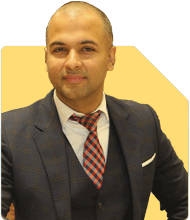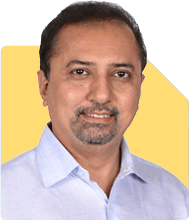Harsh Bharwani | Answer |Ask -Follow
Entrepreneurship Expert - Answered on Aug 24, 2023
As CEO and managing director, he leads the international business and employability initiatives at the computer networking institute, Jetking Infotrain Limited.
After graduating from Delhi University, Bharwani joined the family business in 2010 and set up operations in the US and Vietnam.
He has trained over three lakh students in employability, confidence and key life skills.... more

Hello I want start my own business of flours of wheat,Jowar,Nachos ,Rice etc. i already have two flour machine they can produce 50 Kg daily. please guide how i can start where to sell the product.
Wheat flour shop business plan should give emphasis on the growth factor, its business sustainability and profitability. Good Business Idea You can start this business at both the following places like pastoral areas and also civic area. There are numerous different types of flour as mentioned over and you can start with low investment.
First Way of Wheat Flour Business originally, this type of wheat flour business demands a moderate capital investment. You need to set up an integrated flour shop. Offer the packaged wheat flour products to the guests. You need to have strategic planning for the distribution of wheat flour and marketing. Alternate Way of Wheat Flour Business This type of business requires a small retail space which requires low investment. Install an atta chakki in that particular space. Allow the guests to come on with their grains. Charge the guests for grinding those grains.
Food License for Wheat Flour product Business The Wheat Milling Flour Business comes under the order of Food Processing Industry. So before launching the wheat flour business, it demands specific licenses, warrants and enrollment process. The following are the licenses and warrants that bear for starting the wheat milling flour business You need to apply for the Trade License from the original external authority. You must apply for the FSSAI( Food Safety and Standards Authority of India) enrollment . You should apply for BIS( Bureau of Indian norms) instrument. This type of business doesn't bear a pollution concurrence. Check it with the state pollution control board in your place or area. Determine the association form. Register your wheat milling flour business with ROC. You need to apply for Udyog Aadhaar MSME Online Registration. You must apply for AGMARK( Agricultural Marketing). Check for the arrears of duty. Announce on the following TV Distribute flyers News Papers Use digital technology Incipiently, give Banners at hoardings at the roadside The same system and way you can use for nachos and other flours.
You may like to see similar questions and answers below
Chandu Nair | Answer |Ask -Follow
VC, Angel Investing, Entrepreneurship Expert - Answered on Jul 30, 2023
Baqar Iftikhar Naqvi | Answer |Ask -Follow
Start-up Mentor - Answered on Sep 14, 2023
Baqar Iftikhar Naqvi | Answer |Ask -Follow
Start-up Mentor - Answered on Feb 19, 2024
Baqar Iftikhar Naqvi | Answer |Ask -Follow
Start-up Mentor - Answered on Feb 22, 2024
Baqar Iftikhar Naqvi | Answer |Ask -Follow
Start-up Mentor - Answered on Feb 23, 2024
Dr Dipankar Dutta |1836 Answers |Ask -Follow
Tech Careers and Skill Development Expert - Answered on Dec 05, 2025
Ulhas Joshi |280 Answers |Ask -Follow
Mutual Fund Expert - Answered on Dec 05, 2025
Dr Dipankar Dutta |1836 Answers |Ask -Follow
Tech Careers and Skill Development Expert - Answered on Dec 04, 2025
Ravi Mittal |676 Answers |Ask -Follow
Dating, Relationships Expert - Answered on Dec 04, 2025
Anu Krishna |1745 Answers |Ask -Follow
Relationships Expert, Mind Coach - Answered on Dec 04, 2025
Anu Krishna |1745 Answers |Ask -Follow
Relationships Expert, Mind Coach - Answered on Dec 04, 2025
Mayank Chandel |2562 Answers |Ask -Follow
IIT-JEE, NEET-UG, SAT, CLAT, CA, CS Exam Expert - Answered on Dec 04, 2025
Mayank Chandel |2562 Answers |Ask -Follow
IIT-JEE, NEET-UG, SAT, CLAT, CA, CS Exam Expert - Answered on Dec 04, 2025
Mayank Chandel |2562 Answers |Ask -Follow
IIT-JEE, NEET-UG, SAT, CLAT, CA, CS Exam Expert - Answered on Dec 04, 2025
Mayank Chandel |2562 Answers |Ask -Follow
IIT-JEE, NEET-UG, SAT, CLAT, CA, CS Exam Expert - Answered on Dec 04, 2025

























